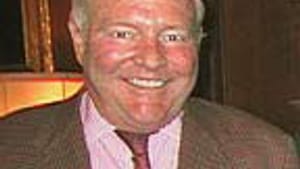Stay in the Loop
BSR publishes on a weekly schedule, with an email newsletter every Wednesday and Thursday morning. There’s no paywall, and subscribing is always free.
Bob Scott's greatest contribution

DAN ROTTENBERG
Local encomiums to Robert Montgomery Scott, who died on October 13th at the age of 76, properly cited his Old Philadelphia pedigree, his gracious manner, his vivacious mother’s role as the model for the Tracy Lord character in Philip Barry’s 1939 play The Philadelphia Story, his devotion to the city, his prodigious fund-raising efforts for local institutions and his long years as president of the Academy of Music and then the Museum of Art. But these eulogies, it seems to me, missed the point.
Bob Scott was greater than the sum of his parts. And the unique value of his service to Philadelphia lay not in the breadth of his activities nor the time he devoted nor the dollars he raised, but in the rare combination of common sense and unassuming courage he brought to whatever role he took on.
Let me cite just two examples. In 1990, when a local populist groundswell embraced the absurd notion of permanently installing Sylvester Stallone’s “Rocky” statue outside the Art Museum’s front entrance, Scott alone brought the city to its senses by quietly stating the obvious: The statue was merely a movie prop whose permanent presence on the museum steps would debase the museum and Philadelphia alike.
A few years later, when a Ponzi scheme called the Foundation for New Era Philanthropy suckered some 300 East Coast museums, colleges, schools, churches and arts organizations into “investing” more than $200 million in the ludicrous hope of doubling their money, Scott as president of the Art Museum was virtually alone in declining to participate— explaining in his customary self-deprecating manner that “we didn’t understand the economics….We were too stupid to participate.”
In the 18th Century Voltaire famously observed, “Common sense is not so common”; in the 19th Century, just as famously, Andrew Jackson declared, “One man with courage makes a majority.” Scott proved their points repeatedly. The 20th Century Penn sociologist E. Digby Baltzell probably had Scott in mind when he remarked, “I believe in inherited wealth. Society needs to have some people who are above it all.” Whether or not Scott welcomed his assigned role in life, his birthright as a relative of Scotts, Montgomerys, Ingersolls and Binneys required him to personify Philadelphia to the world, and the message his deeds consistently conveyed was this: Philadelphia is not Hollywood; it’s not Disneyland; it’s not Las Vegas; it’s not Colonial Williamsburg. In an age of ersatz culture, Scott was the real thing, and he understood in his bones that Philadelphia is the real thing as well.
Sign up for our newsletter
All of the week's new articles, all in one place. Sign up for the free weekly BSR newsletters, and don't miss a conversation.

 Dan Rottenberg
Dan Rottenberg